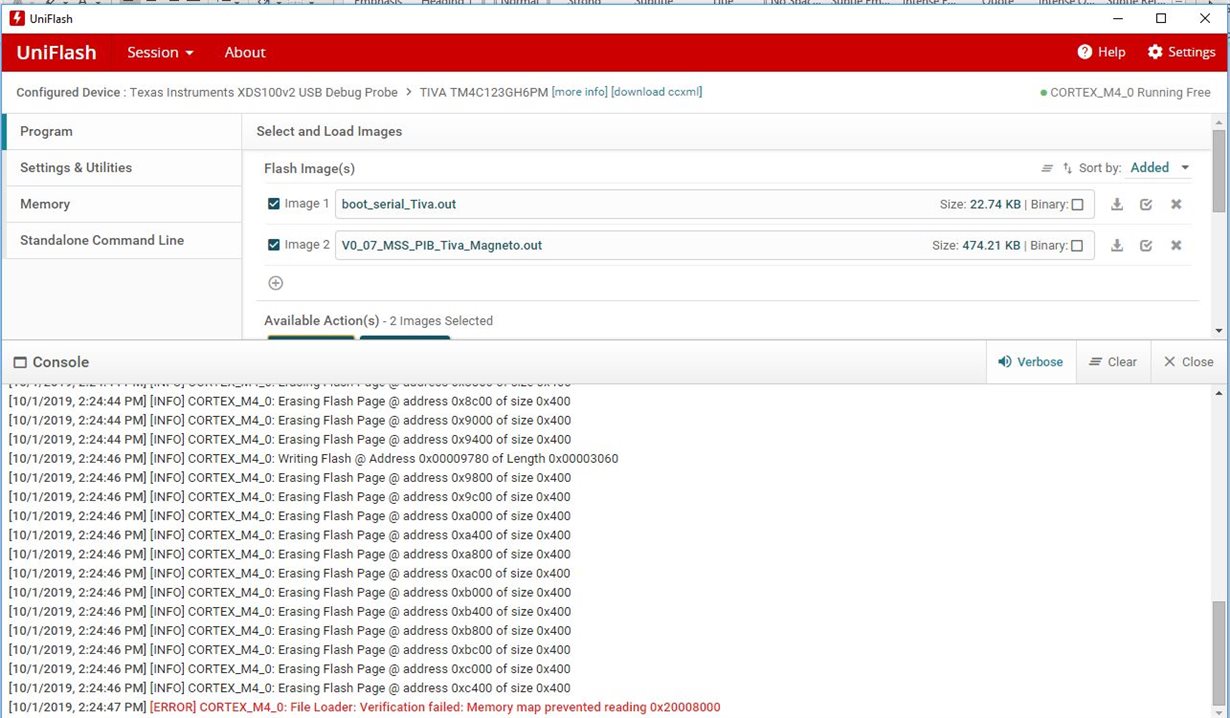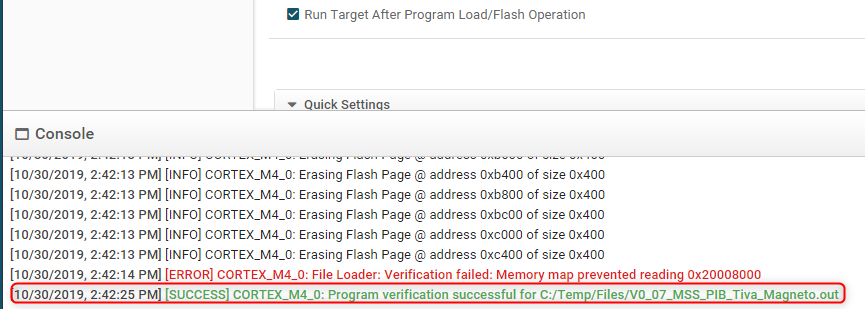Other Parts Discussed in Thread: TM4C123GH6PM,
Posted this yesterday, but can't find the original post.
I am trying to program the Tiva TM4C123GH6PM part using Uniflash 5.1.0 GUI. When it completes the programming, it attempts to read address 0x20008000, which is reserved memory, so an error is generated.
If I create a standalone command line version, it programs WITHOUT the error being generated.
I need to use the GUI. Both methods *should* behave identically.



